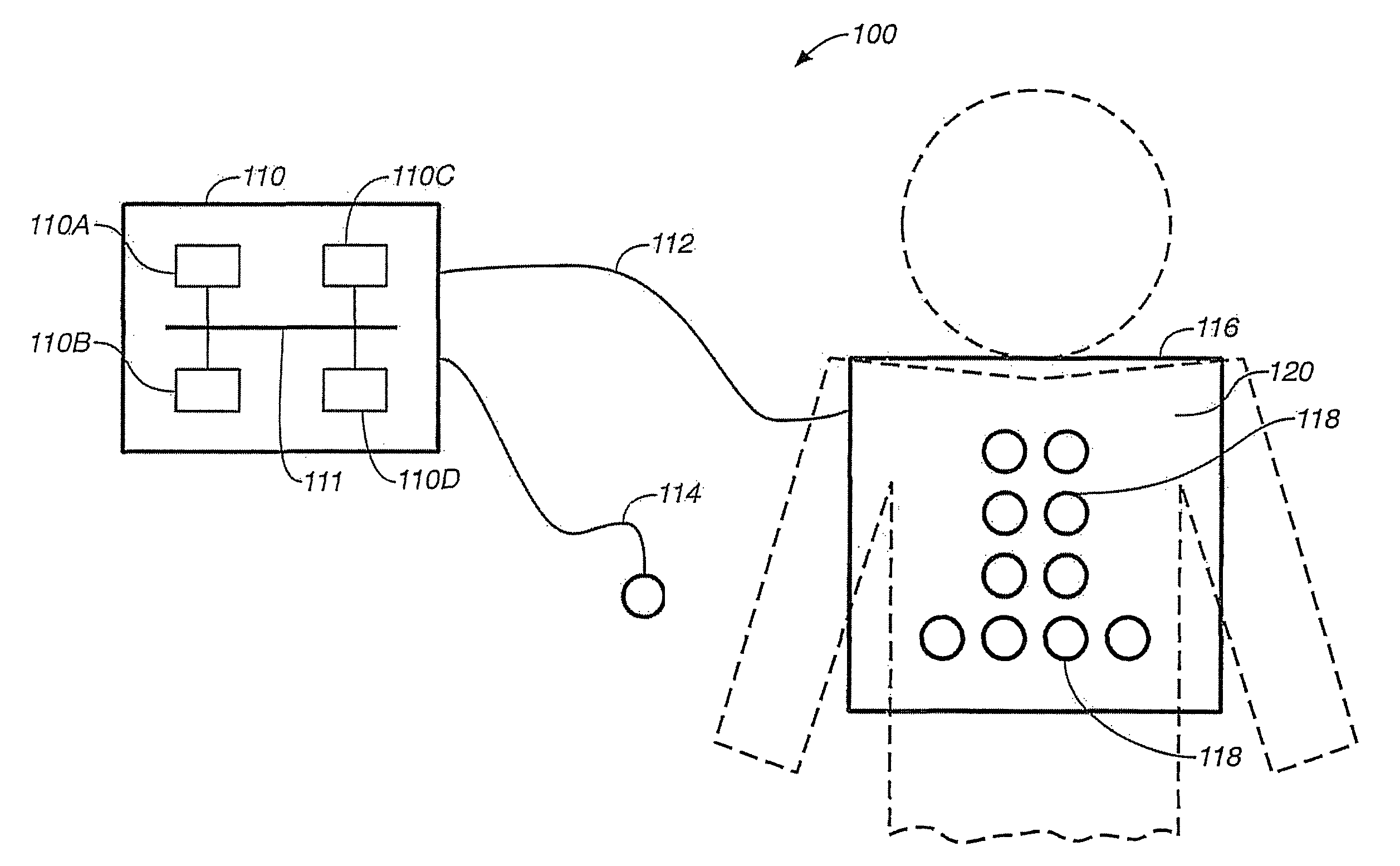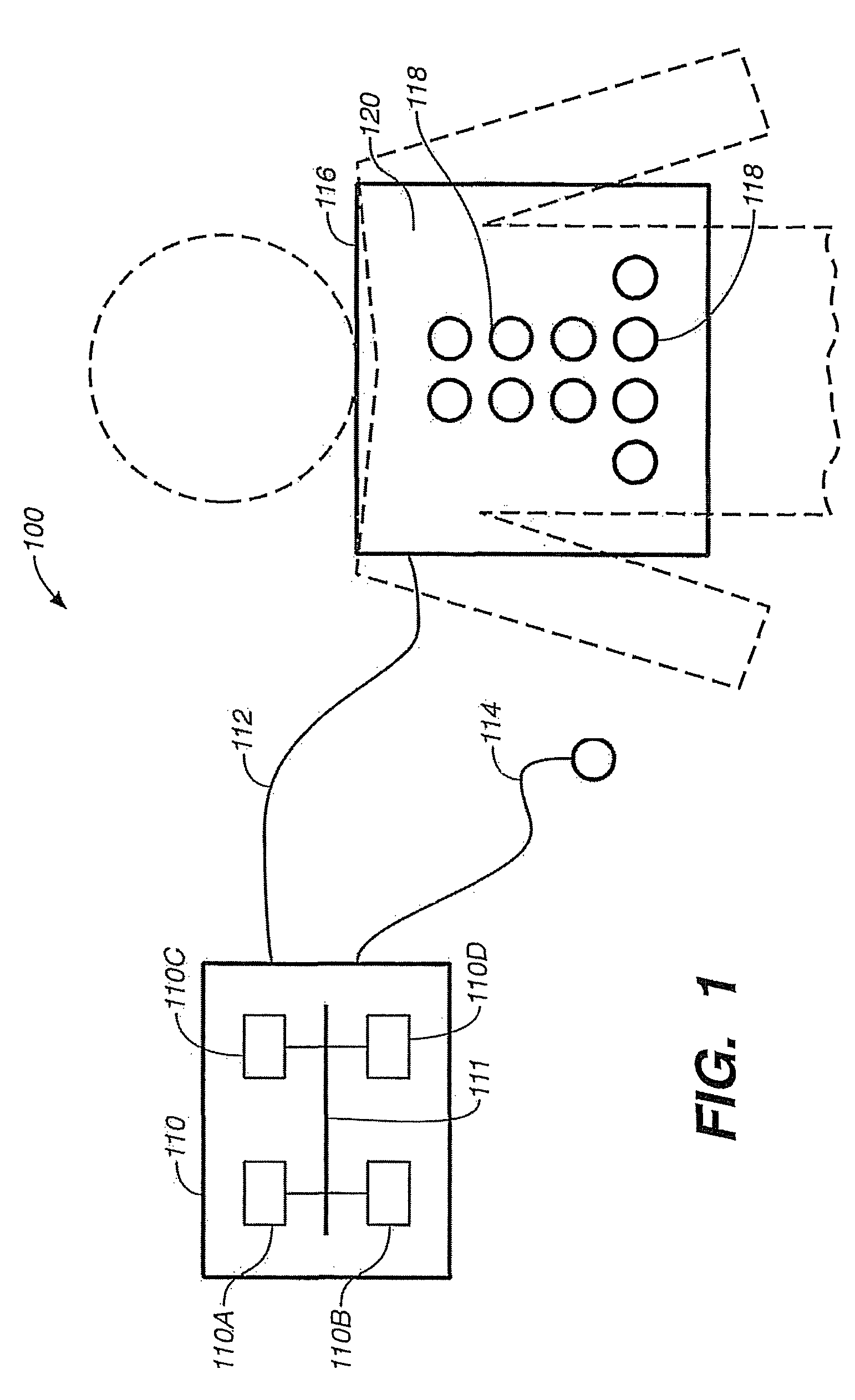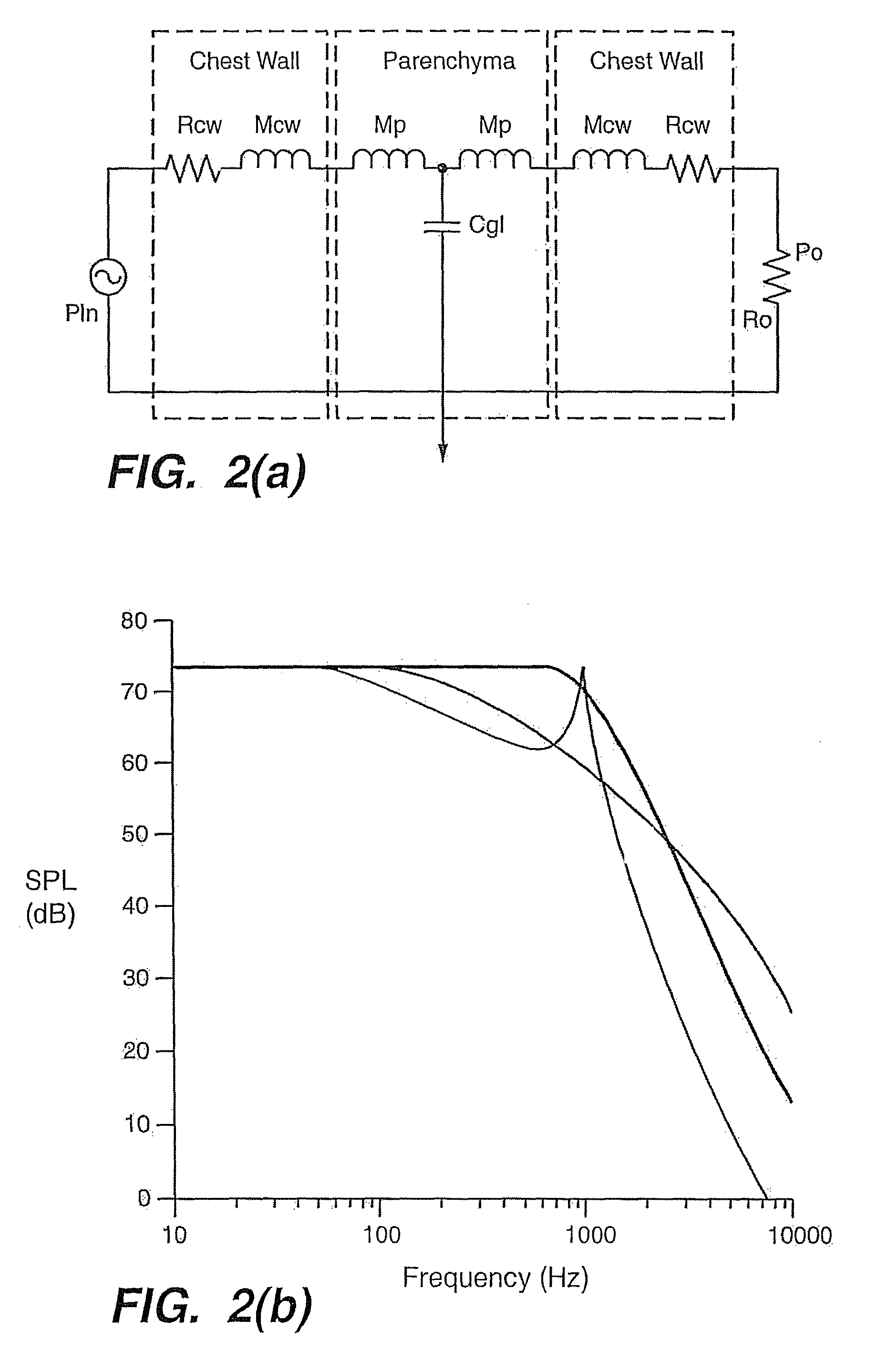Method of determining lung condition indicators
a lung condition and indicator technology, applied in the field of determining the characteristics of biological tissues in humans, can solve the problems of respiratory failure, unfavorable patient lung health, and ineffective ultrasonic techniques in tissues, and achieve the effect of narrowing the possibilities of the condition of the patient's lung
- Summary
- Abstract
- Description
- Claims
- Application Information
AI Technical Summary
Benefits of technology
Problems solved by technology
Method used
Image
Examples
Embodiment Construction
[0027]The present invention utilizes a combination of two different techniques to aid in determination of the condition of the lungs. The first technique is passive auscultation, which involves listening to the natural breath sounds of the lungs as a patient inhales and exhales (during inspiration and expiration). Passive auscultation goes back to the early 1800's when the stethoscope and associated techniques were developed. Of course, modern electronics provide for much more sophisticated measurement and analysis. The second technique is active auscultation which involves actively introducing a sound signal in the lungs and monitoring the signal after it passes through some portion of the lungs. Unlike ultrasonic techniques, this utilizes a lower frequency spectrum comprising audible frequencies.
[0028]An understanding of the theoretical aspects of sound transmission in tissue is helpful for the best use of bio-acoustic data which is obtained using the present invention.
[0029]The t...
PUM
 Login to View More
Login to View More Abstract
Description
Claims
Application Information
 Login to View More
Login to View More - R&D
- Intellectual Property
- Life Sciences
- Materials
- Tech Scout
- Unparalleled Data Quality
- Higher Quality Content
- 60% Fewer Hallucinations
Browse by: Latest US Patents, China's latest patents, Technical Efficacy Thesaurus, Application Domain, Technology Topic, Popular Technical Reports.
© 2025 PatSnap. All rights reserved.Legal|Privacy policy|Modern Slavery Act Transparency Statement|Sitemap|About US| Contact US: help@patsnap.com



